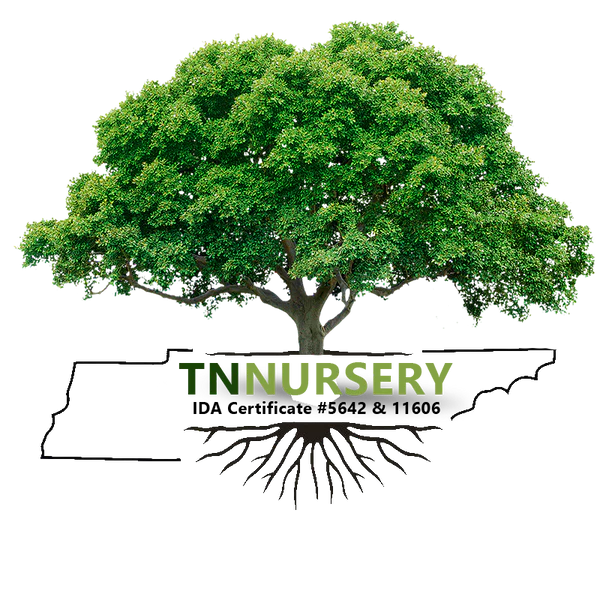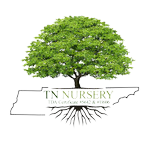Creating an awe-inspiring landscape involves a delicate balance of artistry, knowledge of plant species, and an understanding of environmental factors. Incorporating Winterberry Bush, Sweet Bay Magnolia, Big Bluestem Grass, Carpet Moss, and Christmas Fern into your design can yield a stunning winter landscape that captivates the senses and provides year-round interest. In this guide, we'll explore how to integrate these plants effectively, taking into account their unique characteristics and requirements.
Understanding the Plants For Your Winter Wonderland
1. Winterberry Bush (Ilex verticillata):
The Winterberry Bush is a stunning deciduous shrub that is well-known for its vibrant, show-stopping red berries. Its striking appearance provides a breathtaking contrast against the white, snowy landscape, making it a popular choice for gardeners and nature enthusiasts alike.
This shrub thrives in moist and acidic soils and is native to North America, where it grows to heights of 6 to 12 feet, creating an impressive and dominant presence in any landscape. Its glossy green leaves turn a bright yellow color in autumn, adding a burst of color before the berries appear.
Winterberry Bush is a must-have for any garden or landscape that seeks to add a bold pop of color and an extraordinary visual appeal.
2. Sweet Bay Magnolia (Magnolia virginiana):
The Sweet Bay Magnolia, scientifically known as Magnolia virginiana, is a beautiful and versatile evergreen tree or extensive bush that can extend up to 20 feet tall and 15 feet wide. It is native to the southeastern United States and can be found in wetlands, swamps, and along the coastal plain.
The tree's glossy green leaves are oblong and can extend up to 4 inches long and 3 inches wide. They are thick, and shady green in color, which makes them stand out in any garden. The tree produces fragrant white flowers that can bloom from May to July. These flowers have a pleasant lemony scent and can reach up to 4 inches around. After blooming, the tree produces small red fruit cones that are a food source for birds.
The Sweet Bay Magnolia prefers moist, well-drained soil and partial shade. It can handle a broad range of soil varieties, including sandy and clay soils. The tree can be grown in woodland gardens, along water features such as ponds or streams, or near patios and decks.
In addition to its aesthetic appeal, the Sweet Bay Magnolia also has several practical uses. Its wood is hard and durable, making it useful for furniture, flooring, and tools. Its foliage and bark have been used for medicinal purposes, including treating fever and headaches.
Overall, the Sweet Bay Magnolia is a versatile and beautiful tree that offers both aesthetic and practical benefits. It is a great addition to any garden or outdoor space.
3. Big Bluestem Grass (Andropogon gerardii):
Big Bluestem Grass is a magnificent warm-season grass that is native to the grasslands of North America. This grass species is highly valued for its striking appearance and ecological importance. Its leaves are characterized by a stunning blue-green color that changes to a warm bronze or reddish-brown hue in the fall. The tall and erect stems of Big Bluestem Grass can reach heights of 4 to 8 feet, forming clumps that can spread over large areas. These clumps provide an essential homes for a broad range of wildlife species. Moreover, this grass species adds a spectacular vertical interest to any landscape and is a popular choice for prairie restoration, erosion control, and ornamental landscaping.
4. Carpet Moss (Bryum argenteum):
Carpet Moss is a fascinating species of moss that delights the senses with its unique characteristics. It is also known as Silver Moss or Silvery Thread Moss, owing to its shimmering silvery appearance. This low-growing moss species forms dense, velvety mats on the forest floor that are a sight to behold. Its feathery texture is fine and delicate, adding a lush green carpet-like effect to the landscape. You can find Carpet Moss in shady or moist areas, where it thrives and adds a touch of natural beauty to the surroundings.
5. Christmas Fern (Polystichum acrostichoides):
The Christmas Fern, also known as Polystichum acrostichoides, is a captivating evergreen fern species that is native to the eastern regions of North America. This fern is highly sought-after for its striking appearance and unique characteristics. Its fronds are leathery, dark green, and shaped like a lance, with a length of up to 3 feet. The Christmas Fern is well-known for its ability to retain its lush green color throughout the winter months, serving as an anchor of beauty in any landscape.
This fern thrives in soils that are rich in organic matter, well-drained and moist, and can extend to a altitude of up to 2 feet. The Christmas Fern is adaptable to a range of soil varieties and can handle a wide spectrum of growing conditions. However, it prefers partial to full shade, making it a fantastic option for woodland gardens, borders, and shaded areas.
In conclusion, the Christmas Fern is an excellent complement to any terrain due to its unique appearance and year-round appeal.
Designing the Landscape For Your Winter Wonderland
1. Focal Points and Composition:
Begin by selecting focal points for your landscape, such as specimen trees or groupings of shrubs. Consider placing Sweet Bay Magnolia trees strategically to frame views or create focal points, taking into account their mature size and growth habit. Intersperse Winterberry Bushes throughout the design to add pops of color and interest, especially against a backdrop of evergreen foliage.
2. Layering and Texture:
Create depth and visual interest by layering plants of varying heights and textures. Position Big Bluestem Grasses towards the back of the border or in naturalistic drifts to provide vertical accents and movement. Contrast the vertical lines of the grasses with the low-growing Carpet Moss, which can be used to carpet the ground around the base of trees or along pathways, softening hard edges and providing a lush underplanting.
Seasonal Interest Of Your Winter Wonderland
Plan for year-round interest by selecting plants with seasonal appeal. While Winterberry Bushes steal the show with their vibrant berries in winter, Sweet Bay Magnolias offer fragrant blooms in late spring and sporadically throughout the summer. Integrate Christmas Ferns for their evergreen foliage, which provides structure and texture in the winter garden.
4. Habitat and Wildlife:
Design with wildlife in mind by incorporating plants that supply food and habitat for birds, insects, and other wildlife. Winterberry Bushes attract birds with their berries, while Big Bluestem Grasses offer nesting sites and cover for small animals. Additionally, the dense mats of Carpet Moss provide habitat for insects and contribute to overall biodiversity.
5. Maintenance and Care:
Consider the care needs of each plant species when designing your landscape. While Winterberry Bushes and Sweet Bay Magnolias are relatively low-maintenance once established, they may require occasional pruning to maintain their shape and size. Big Bluestem Grasses benefit from annual cutting back in late winter or early spring to encourage fresh growth, while Carpet Moss and Christmas Ferns require minimal maintenance beyond occasional watering and removal of debris.
Incorporating Winterberry Bush, Sweet Bay Magnolia, Big Bluestem Grass, Carpet Moss, and Christmas Fern into your landscape design can result in a visually stunning and ecologically rich winter landscape. By comprehending the unique features and requirements of each plant species, you can create a harmonious composition that provides year-round interest, habitat for wildlife, and a sense of tranquility and beauty in your outdoor space. Whether you're designing a small residential garden or a sprawling woodland landscape, these plants offer endless possibilities for creating an awe-inspiring winter oasis.


